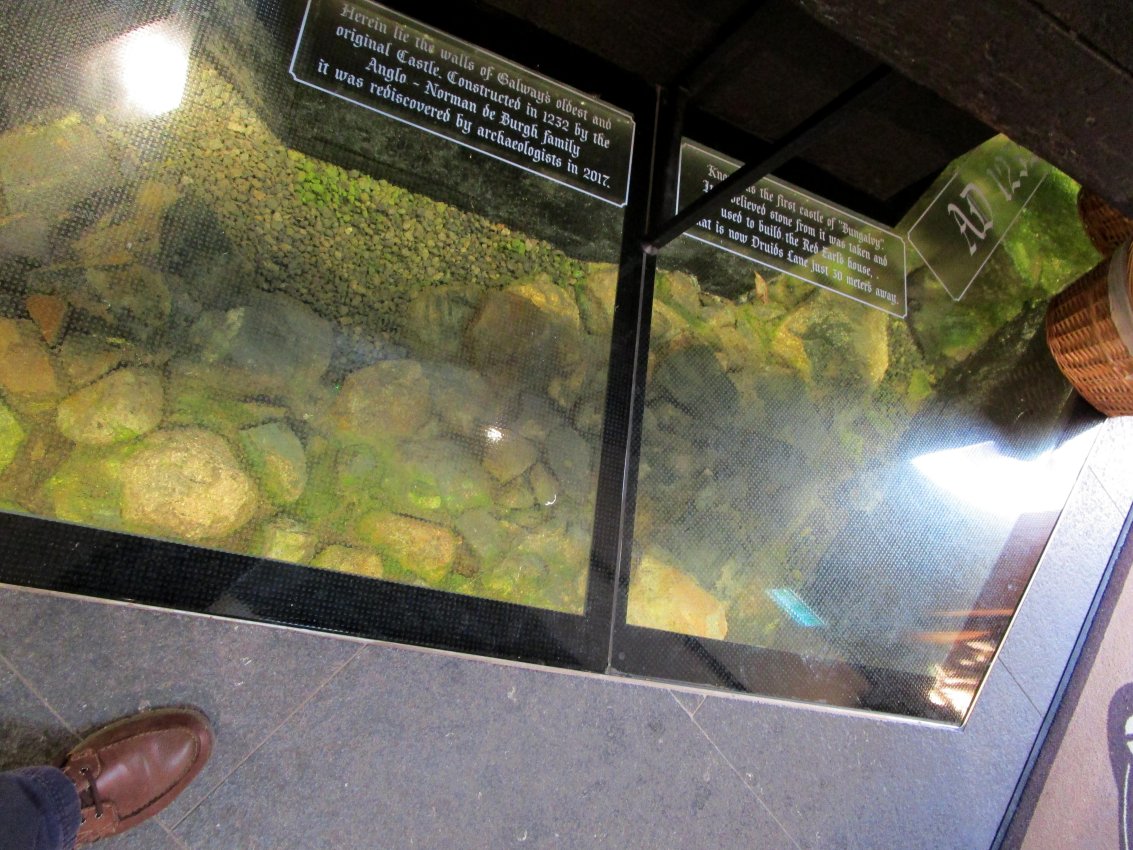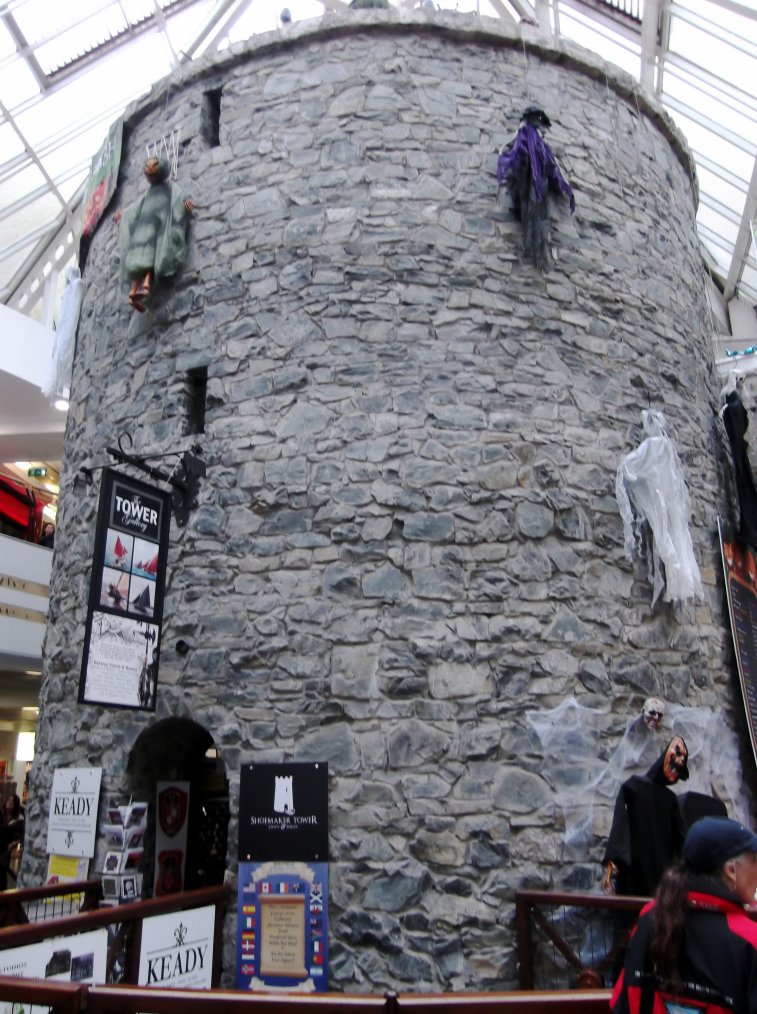Galway
Galway castle was founded some 50 years before Henry II
(1154-89) annexed the bulk of Ireland. Turlough O'Connor (d.1156)was the
nephew of King Muirchertach O'Brian (d.1119) who had helped force his
uncle into retirement in 1118. In 1124 Turlough founded a fort at Dun Gaillimhe which eventually grew into Galway castle and city. Similarly he is recorded as having built Athlone castle in stone in 1129. He is also reputed to have built Dunmore (as his capital) and Ballinasloe castles as well as refounding Cong abbey around 1135. In 1132, Athlone castle
faced a combined attack from the men of Munster (Turlough O'Brian
(d.1167)) and Meath (Tiernan O'Rourke (d.1173)) and later Cormac
MacCarthy of Desmond (d.1138) after he had taken Galway castle (Cairlen Bona Gaillme)
with the aid of a fleet from Munster and forced his way up the
Shannon. By 1150 Turlough's power was failing and he gave hostages
to Muirchertach MacLochlainn (d.1166), thereby admitting his supremacy.
It is unknown if he rebuilt Galway castle in this time.
Galway was occupied by Richard Burgh (d.1242), possibly as early as
1226 when he was granted Connaught. Obviously he rebuilt or
refounded the castle as it was attacked and seriously damaged in 1233
during the Marshall rebellion. In 1247 a fire in Galway town also
burned the wooden sections of the castle. The fortress is claimed
to have been rebuilt as Walter Burgh (d.1271) seems to have died in the
it and it was supposedly dismantled after 1280 and the stone used to
build the Red Earl's House by Earl Richard Burgh of Ulster (d.1326).
Description
Nothing major remains of the castle apart from some rather pathetic
foundations of a round tower under the Aran Sweater Market near the
Spanish Gate and various lengths of the city walls. The
castle remains consists of the foundations of a poorly built turret, no
more than 20' in diameter, with walls no more than 3' thick.

The Spanish Gate was built in 1584 as an extension of the older city
walls which stretched from Martin's Tower in the north to the bank of
the River Corrib/Galway in the south. Further inland 2 round
mural towers, including the north-easternmost Shoemaker Tower, with the
north-east section of city wall, survives in the Eyre Square shopping
centre. These would appear to have been built before 1270.
Certainly a document from the 1270s mentions the making of:
a large fire to burn lime and
for wood carried to the same and for the wages of masons and other
workmen employed in breaking stone and conveying it... and for the
wages of workmen and others assisting the masons to make walls on the
side towards the sea and to build a tower beyond the great gate and in
buying iron for making crowbars, pickaxes, nails and other tools.
That the sea wall was being built at this time would suggest that the
rest of the enceinte away from the sea had already been completed, as
too would the mention of the building of a tower before the land gate
which therefore already existed. St Nicholas' Collegiate church
is thought to date from the 1320s and may incorporate an older building
in the chancel's south wall.
Perhaps you would like to join me in
visiting this and other great castles of Ireland in
October with Scholarly Sojourns. Details of the trip can be
found by clicking
here.
Copyright©2021
Paul Martin Remfry


